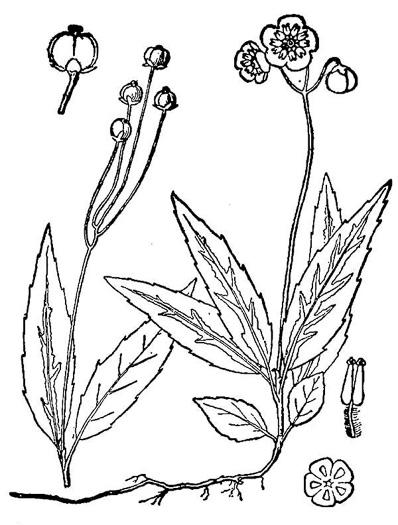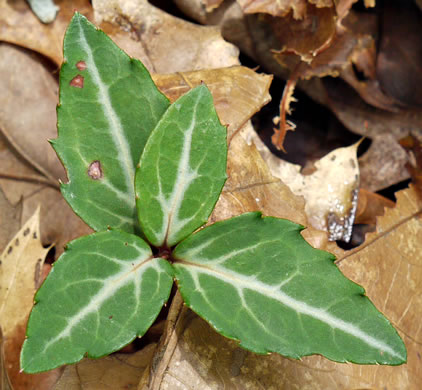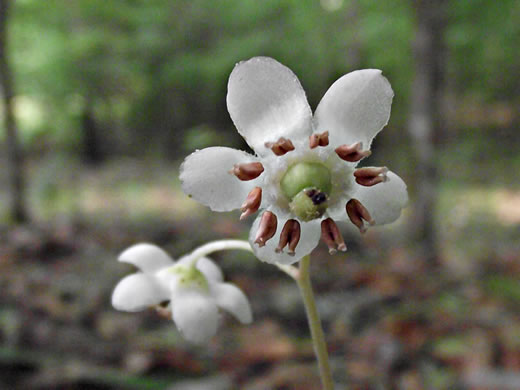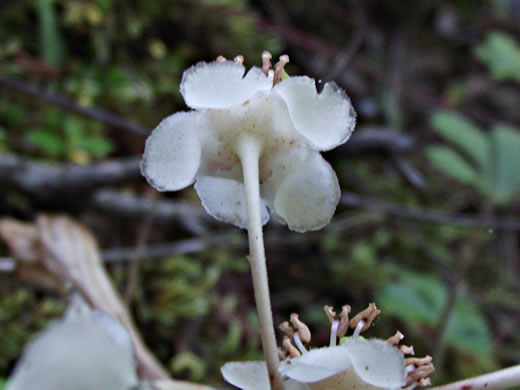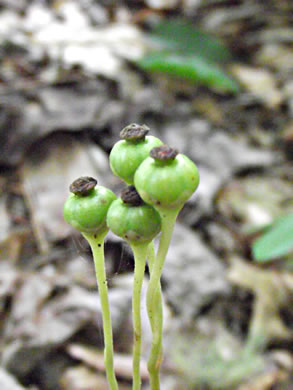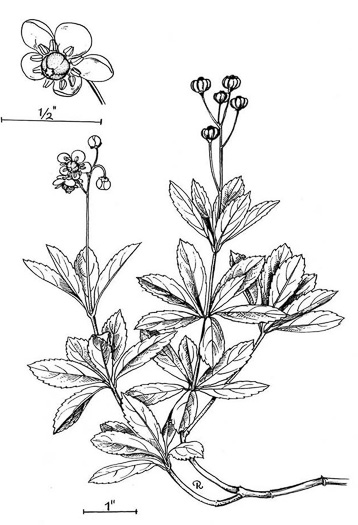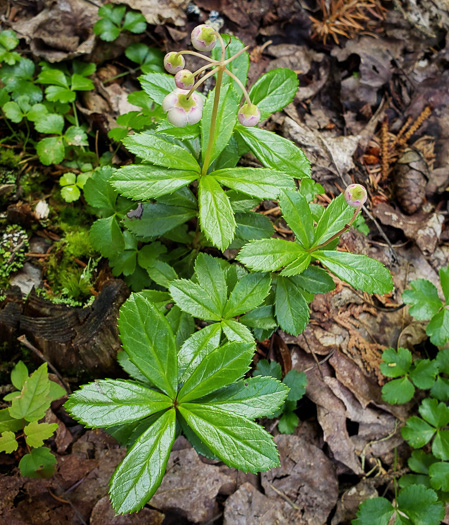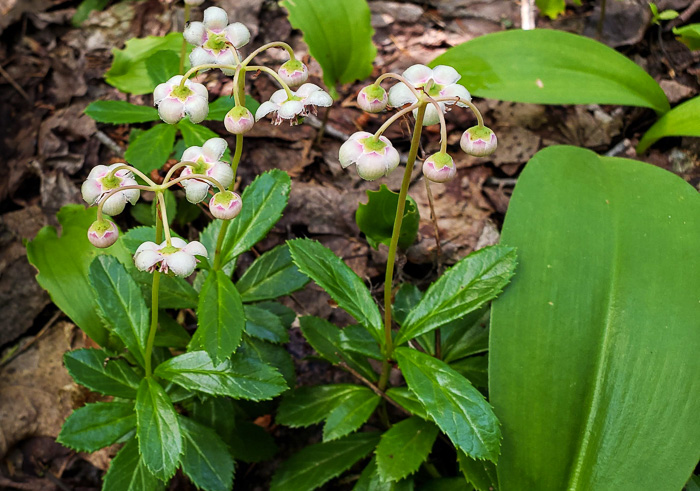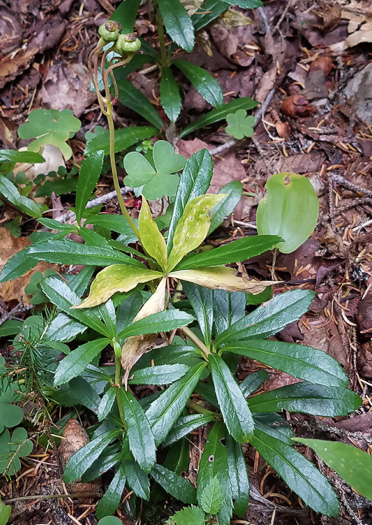Hovering over an image will enlarge it and point out features (works better on desktop than on mobile).
![]() A camera indicates there are pictures.
A camera indicates there are pictures.
![]() A speaker indicates that a botanical name is pronounced.
A speaker indicates that a botanical name is pronounced.
![]() A plus sign after a Latin name indicates that the species is further divided into varieties or subspecies.
A plus sign after a Latin name indicates that the species is further divided into varieties or subspecies.
Most habitat and range descriptions were obtained from Weakley's Flora.
Your search found 2 taxa.
Clicking ![]() one takes you to more information and/or pictures.
one takes you to more information and/or pictures.

![]()
![]() Common Name:
Pipsissewa, Striped Wintergreen, Rat's Bane
Common Name:
Pipsissewa, Striped Wintergreen, Rat's Bane
Weakley's Flora: (4/24/22) Chimaphila maculata FAMILY: Ericaceae
SYNONYMOUS WITH PLANTS National Database: Chimaphila maculata FAMILY: Pyrolaceae
SYNONYMOUS WITH Vascular Flora of the Carolinas (Radford, Ahles, & Bell, 1968): Chimaphila maculata 145-01-001 FAMILY: Ericaceae
Habitat: Forests and woodlands, mostly rather xeric and acid
Common (rare in GA Coastal Plain)
Native to the Carolinas & Georgia

![]()
![]() Common Name:
Prince's-pine
Common Name:
Prince's-pine
Weakley's Flora: (4/24/22) Chimaphila umbellata var. cisatlantica FAMILY: Ericaceae
SYNONYMOUS WITH PLANTS National Database: Chimaphila umbellata ssp. cisatlantica FAMILY: Pyrolaceae
INCLUDED WITHIN Vascular Flora of the Carolinas (Radford, Ahles, & Bell, 1968): Chimaphila umbellata 145-01-002 FAMILY: Ericaceae
Habitat: Forests and woodlands, mostly rather xeric and acid
Rare
Native to the Carolinas
Your search found 2 taxa. You are on page PAGE 1 out of 1 pages.

